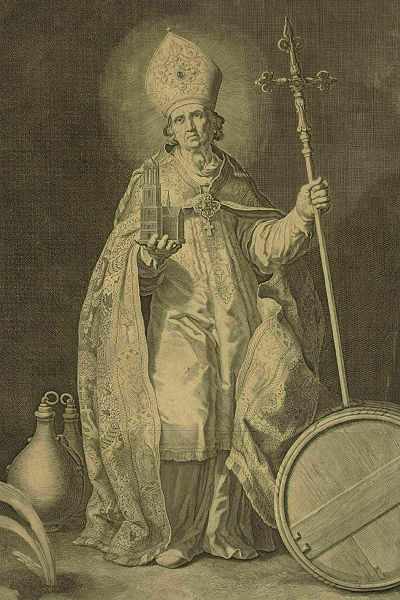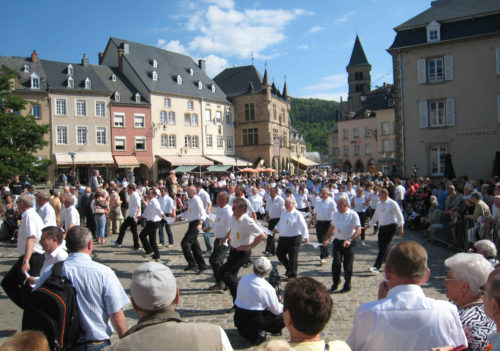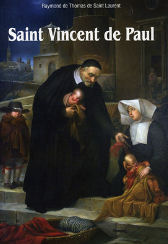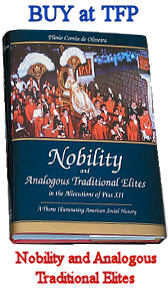St. Willibrord
Bishop of Utrecht, Apostle of the Frisians, and son of St. Hilgis, born in Northumbria, 658; died at Echternach, Luxemburg, 7 Nov., 739. Willibrord made his early studies at the Abbey of Ripon near York, as a disciple of St. Wilfrid, and then entered the Benedictine Order. When twenty years old he went to Ireland and spent twelve years in the Abbey of Rathmelsigi (identified by some as Mellifont in Co. Louth) under St. Egbert. From him Willibrord and eleven companions received the mission to Frisia, at the request of Pepin. They came to Utrecht but did not remain there, repairing to the court of Pepin. In 692 Willibrord went to Rome, received Apostolic authorization, and returned to his missionary labours. At the wish of Pepin he went for a second time to Rome, was consecrated Bishop of the Frisians by Sergius III (21 Nov., 695) in the Church of St. Cecilia, and given the name of Clement. He also received the pallium from the pope. On his return he laboured among the people assigned to him; to raise recruits for future apostolic work he founded a monastery at Utrecht, where also he built a church in honour of the Holy Redeemer and made it his cathedral. In 698 he established an abbey at the Villa Echternach on the Sure; this villa had been presented to him by St. Irmina, daughter of St. Dagobert II, the donation being legally confirmed in 706.
When Radbod gained possession of all Frisia (716) Willibrord was obliged to leave, and Radbod destroyed most of the churches, replaced them by temples and shrines to the idols, and killed many of the missionaries. Willibrord and his companions made trips between the Maas and the Waal, to the North of Brabant, in Thuringia and Geldria, but met with no success in Denmark and Helgoland. After the death of Radbod he returned (719) and repaired the damages done there, being ably assisted in this work by St. Boniface. Numberless conversions were the result of their labour. Willibrord frequently retired to the Abbey of Echternach to provide more particularly for his own soul; he was buried in the oratory of this abbey, and after death was almost immediadely honoured as a saint. Some relics were distributed in various churches, but the greater part remained at the abbey. On 19 Oct., 1031, the relics were placed in a shrine under the main altar of the new basilica. His feast is celebrated on 7 Nov., but in England, by order of Leo XIII, on 29 Nov. Since his burial Echternacht has been a place of pilgrimage, and Alcuin mentions miracles wrought there. The old church was restored in 1862 and consecrated in Sept., 1868. Another solemn translation of the relics took place on 4 June, 1906, from the Church of St. Peter to the new basilica. On this occasion occurred also the annual procession of the holy dancers (see below). Five bishops in full pontificals assisted; engaged in the dance were 2 Swiss guards, 16 standard-bearers, 3045 singers, 136 priests, 426 musicians, 15,085 dancers, and 2032 players (Studien u. Mittheilungen, 1906, 551).
No writing can with certainty be attributed to St. Willibrord except a marginal note in the Calendar of Echternach giving some chronological data. On his testament or last will, which is probably genuine, see “Acts SS.”, III Nov., 631. In the national library of Paris (No. 9389) there is a copy of the Gospels under the name of Willibrord; this is an old Irish manuscript and was probably brought by Willibrord from Ireland (Bellesheim, “Gesch. der kath. Kirche in Irland”, I, Mainz, 1890, 623).
The Life was written by Alcuin and dedicated to BEORNRAD. (Abbot of Echternach). He probably made use of an older one written by a British monk, which is lost. This was used also by THEOFRIC.
FRANCIS MERSHMAN (Catholic Encyclopedia)
________________________________
The Dancing Procession
The Abbey of Echternach owes much of its fame, especially in modern times, to the curious “dancing procession” which takes place annually on Whit Tuesday, in honor of St. Willibrord. The cult of the saint may be traced back almost to the date of his death, and the stream of pilgrims to his tomb in the abbey church has never ceased. The Emperors Lothair I, Conrad, and Maximilian may be numbered amongst them. The tomb stands before the high altar, and has been recently entirely renewed. On it is a recumbent effigy of the saint, and amongst other relics preserved there are a mitre, crosier, and chasuble said to have been used by him. The origin of the procession cannot be stated with certainty. Authentic documents of the fifteenth century speak of it as a regular and recognized custom at that time, but for earlier evidence there is only tradition to depend upon. The legend is that in 1347, when a pestilence raged amongst the cattle of the neighborhood, the symptoms of which were a kind of trembling or nervous shaking followed by speedy death, the people thought that by imitating these symptoms, more or less, whilst imploring the intercession of St. Willibrord, the evil might be stayed. The desired result was obtained, and so the dancing procession to the saint’s tomb became an annual ceremony. Nowadays it is made an act of expiation and penance on behalf of afflicted relations and especially in order to avert epilepsy, St. Vitus’s dance, convulsions, and all nervous diseases.
The function commences at nine o’clock in the morning at the bridge over the Sure, with a sermon by the parish priest (formerly the abbot of the monastery); after this the procession moves towards the basilica, through the chief streets of the town, a distance of about 11 kilometers. Three steps forward are taken, then two back, so that five steps are required in order to advance one pace. The result is that it is well after midday before the last of the dancers has reached the church. They go four or five abreast, holding each other by the hand or arm. Many bands accompany them, playing a traditional melody which has been handed down for centuries. A large number of priests and religious also accompany the procession and not infrequently there are several bishops as well. On arrival at the church, the dance is continued around the tomb of St. Willibrord, when litanies and prayers in his honor are recited, and the whole concludes with Benediction of the Blessed Sacrament. Though curious and even somewhat ludicrous, the people perform it in all seriousness and as a true act of devotion. It usually attracts to Echternach a great concourse of tourists as well as pilgrims, and as many as ten thousand people generally take part in it. The procession took place annually without intermission until 1777. Then, on account of some abuses that had crept in, the music and dancing were forbidden by the Archbishop of Trier, and in 1786 Joseph II abolished the procession altogether. Attempts were made to revive it ten years later but the French Revolution effectually prevented it. It was recommenced, however, in 1802 and has continued ever since. In 1826 the Government tried to change the day to a Sunday, but since 1830 it has always taken place on Whit Tuesday, as formerly.
G. CYPRIAN ALSTON (Catholic Encyclopedia)



















